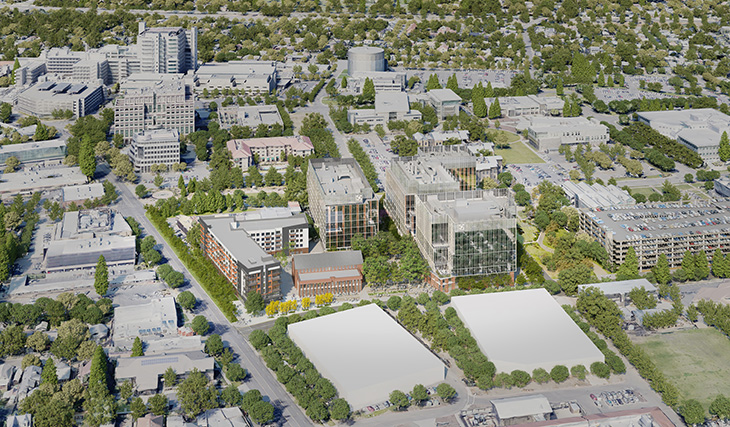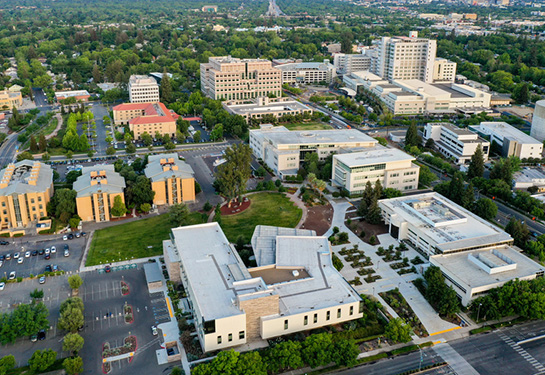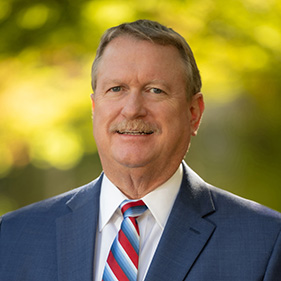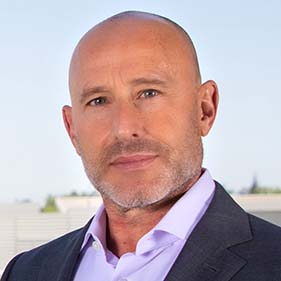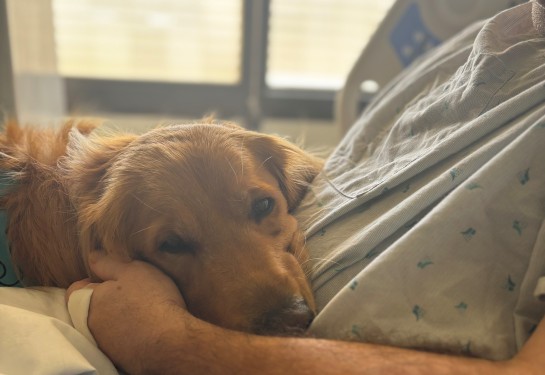UC Davis Medical Center celebrates 50th anniversary
UC Davis Health is marking a half-century of providing world-class care to the region. It was 50 years ago that the University of California Regents purchased the Sacramento Campus and the Sacramento Medical Center.
On July 1, 1973, the regents bought the hospital for $1, making it the permanent teaching hospital for the UC Davis School of Medicine. The Regents also acquired part of the former California State Fairgrounds that included buildings, land, equipment and supplies for the fair market value of $8 million.
“Fifty years ago, UC Davis added a Sacramento Campus to strengthen our ties to the region and become a major catalyst for economic change,” said UC Davis Chancellor Gary S. May. “Today, our Sacramento Campus creates thousands more jobs for our graduates and contributes more than $4.5 billion to the area’s economy. Aggie Square will be an additional community space for public-private partnerships, bringing even more investment, research and jobs for all of Northern California.”

A teaching hospital in Davis or Sacramento?
In September 1968, the School of Medicine, then located on the Davis campus, welcomed its first class with 48 students.
Two years prior, UC Davis and Sacramento County had signed an agreement for the Sacramento County Hospital to be the primary clinical teaching facility. But University of California officials were interested in developing a 320-bed teaching hospital on the Davis campus closer to the medical school. However, two bond issues that would have funded it failed.
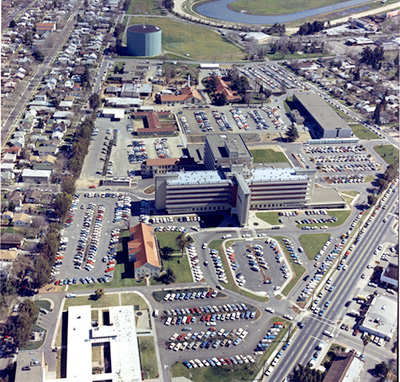
“There was a lot of debate on the location of the permanent teaching hospital being in Davis or Sacramento,” recalled J. Douglas Kirk, chief medical officer of UC Davis Medical Center. “Many faculty members preferred having the hospital in Davis and many government leaders argued the medical center could be of much greater service to most residents of the Sacramento area if it were in Sacramento.”
After much negotiation, the university and the Sacramento County Board of Supervisors agreed to have UC Davis take over operation of the county hospital beginning in July 1973.
“Fortunately for us, having the teaching hospital in Sacramento has provided a broader training experience for our students and residents,” Kirk added. “Just as importantly, it has created a center of care for the underserved communities nearby and a center of medical excellence and advanced care for the entire region.”
Fortunately for us, having the teaching hospital in Sacramento has provided a broader training experience for our students and residents. Just as importantly, it has created a center of care for the underserved communities nearby and a center of medical excellence and advanced care for the entire region.”—J. Douglas Kirk
Being in an urban area has helped UC Davis Health build a state-of-the-art emergency department that includes the region’s only level I adult and pediatric trauma centers. Currently, the medical center provides level I trauma care for a region covering 6 million people in 33 counties, across 65,000 square miles.
“Our trauma care is one of the areas that sets us apart in Sacramento,” said Geneva Harris, who served as an administrator at the medical center for over 40 years. “You are only able to have a trauma program when you are in a large city like Sacramento, where many freeways come together, and you have the population to support it.”
From humble beginnings
When UC Davis took over operation of the Sacramento Medical Center, the hospital was contained to one city block. Where Shriners Hospital now stands, there were small houses. Empty fields stretched to the east of the former California State Fairgrounds and the old Coca-Cola factory operated across the street on Stockton Boulevard.
Nurses wore white uniforms and white caps, caring for five to six patients in each room. Patient beds were operated with manual cranks.
“I didn’t realize manual crank beds were atypical at that time,” joked Timothy Albertson, chair of internal medicine at UC Davis Health, who began medical school at UC Davis just two months after the university purchased the hospital. “It felt like we were starting a Ford Model T.”
During the winter holiday season, staff would gauge how foggy their drive home would be based on if they could see the large Christmas tree, Santa Claus and Rudolph decorations on top of the Coca-Cola factory.
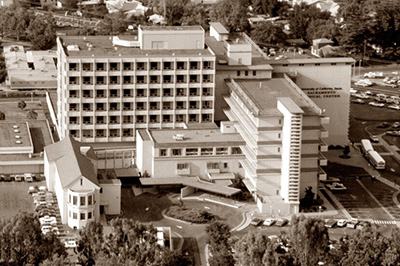
“It was the typical one-horse town hospital with a hodgepodge of buildings,” Albertson added. “The smallness of the medical center at that time is hard to imagine now.”
The only inpatient care areas were the north and south wings of the hospital. The emergency department was limited to treating eight patients at one time. It was later expanded to enable treating 13 patients at a time by moving hospital administration to another building.
Despite the antiquated nature of the hospital when UC Davis took over, during the last 50 years the medical center has vastly expanded its patient services and increased its groundbreaking research. It now covers nearly 150 acres, including the development of most of the former California State Fairgrounds.
“The early CEOs had the vision to buy the state fairgrounds that is now part of our campus, which gave us inner-city acreage to do what we are doing now,” Albertson said. “That was amazing forward-thinking, especially at a time when money was very tight. It is paying huge dividends now.”
The early CEOs had the vision to buy the county fairgrounds that is now part of our campus, which gave us inner-city acreage to do what we are doing now. That was amazing forward-thinking, especially at a time when money was very tight. It is paying huge dividends now.”—Tim Albertson
What has not changed is the professionalism and quality of the doctors, nurses and other staff members who made the hospital what it is today.
“We have always had a dedicated staff who have always put the patients’ needs first,” said Jennifer Jeffries, clinical laboratory scientist supervisor and one of the medical center's longest tenured employees. “During my 42 years at UC Davis, this has never changed.”
Today, UC Davis Health has over 18,000 employees in the region who work every day to advance science, educate the health leaders of the future, and care for the patients who rely on them.
“For more than 50 years, UC Davis has been providing transformative care to patients, even before the university took over the facility’s operations from Sacramento County,” said David Lubarsky, vice chancellor of human health sciences and CEO of UC Davis Health. “I am incredibly proud of our staff, faculty and students who bring their expertise and compassion to work every day to put our patients at the center of everything we do.”
I am incredibly proud of our staff, faculty and students who bring their expertise and compassion to work every day to put our patients at the center of everything we do.”—David Lubarsky
This is who we are
In the early 1970s, The Sacramento Bee described the Sacramento Medical Center as a “hospital of last resort.” Patients no one else would take or who could not afford to go elsewhere came to the medical center for treatment.
When UC Davis assumed control of the hospital, it also took responsibility for the care of patients most in need.
“We used to get patients dropped off in front of our emergency room in cabs sent from other hospitals,” Kirk recalled. “We were at the epicenter of care being provided to patients who came from backgrounds and communities with health disparities.”
Caring for the most vulnerable patients and addressing health and social inequities is a core mission of UC Davis, the hospital and the health system.
“Our mission as a health system is unique: educating the next generations of physicians, conducting research to find better ways to treat patients and a commitment to helping the people who need us most and who can afford it least,” Harris added. “Each of these missions weave together into an impressive product and build off each other to make the whole better.”
Our mission as a health system is unique: educating the next generations of physicians, conducting research to find better ways to treat patients and a commitment to helping the people who need us most and who can afford it least. Each of these missions weave together into an impressive product and build off each other to make the whole better.”—Geneva Harris
In 2020, UC Davis Health formally launched its Anchor Institution Mission for Community Health, as one of the leading institutions in both higher education and health care in the region. the health system committed to leveraging its economic power, and human and intellectual resources to increase the economic vitality of the surrounding communities, thereby improving the health, welfare and well-being of residents.
“Over the last 50 years, the ‘Aggie Spirit’ has certainly continued and not changed – it has just continued to mature,” Robin L. Hansen said, professor emerita of clinical pediatrics, who was a UC Davis medical student when the university purchased the hospital.
Building for the future
Recently, UC Davis Health has embarked on what has become the most transformative period in its history.
Set on a path of unprecedented growth to improve health care delivery for patients throughout Northern California, UC Davis Health has seen an investment of more than $6 billion in new construction projects.
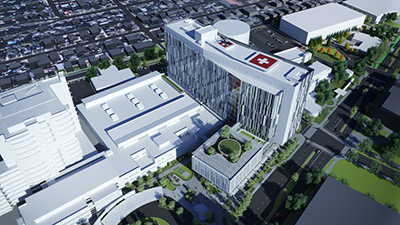
“Since 1973, we have invested billions of dollars in the Sacramento Campus and worked hard to make a former county hospital into a place where people want to go for nationally ranked patient care,” added Lubarsky. “Now UC Davis’ Sacramento Medical Center is one of the best in the United States, by every imaginable measure – mortality rates, breadth of high-quality services such as trauma and transplant, cutting edge technology such as robotics, sustainability, and diversity. We see this in our regular awards from U.S. News & World Report, Newsweek, Forbes, Becker’s Hospital Review, Press Ganey, CHIME and many others – recognizing our efforts to deliver tomorrow’s health care today to our patients while taking care of all the people who deliver that care.”
Already completed projects include a state-of-the-art rehabilitation hospital and the Tschannen Eye Center. Current construction projects include the new California Tower, which will nearly quadruple the number of intensive care unit beds in the region and Aggie Square, an innovation hub that will bring together university research and teaching, industry and the community to create opportunities across the region
In the last year, UC Davis also broke ground on the 48X Complex, a $579 million ambulatory surgery center that Lubarsky said will be the largest outpatient surgery center in the country.
“This growth opens the door for us to able to provide broader and more affordable care, conduct cutting edge research and make this campus the focal point of health care and advancing knowledge in the Sacramento region,” Albertson said.
This growth opens the door for us to able to provide broader and more affordable care, conduct cutting edge research and make this campus the focal point of health care and advancing knowledge in the Sacramento region.”—Tim Albertson
These projects have created thousands of construction jobs and are expected to establish even more health care positions for the surrounding community.
“Our appetite for growth has evolved to a new level,” Kirk reflected. “I am proud to say this has made us a destination location, but we still have not lost focus of our everyday mission: to provide unparalleled care to everyone in our community.”
